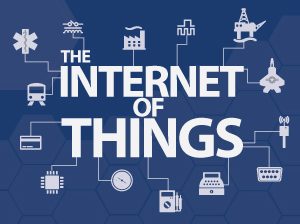Factory Floor Connectivity of the Future: The Industrial Internet of Things
 Google Glass, Fitbit, and Nest are just a few of the names now familiar to consumers in North America. This year’s Consumer Electronics Show featured demonstrations of an Internet-connected tennis racket and many “smart home” products, from smartphone-tethered light bulbs to door locks and washing machines. These are just a few examples of wearable computers, or in-home devices designed to connect to “the Internet of Things.”
Google Glass, Fitbit, and Nest are just a few of the names now familiar to consumers in North America. This year’s Consumer Electronics Show featured demonstrations of an Internet-connected tennis racket and many “smart home” products, from smartphone-tethered light bulbs to door locks and washing machines. These are just a few examples of wearable computers, or in-home devices designed to connect to “the Internet of Things.”
The idea of the Internet of Things isn’t new, though. The massively interoperating network of devices, meant to simplify new products and service models for consumers, has been discussed by IT industry insiders for years.
However, thanks in part to some big-figure prognostications by the likes of Cisco Chief Executive John Chambers, Internet of Things is giving “the cloud” some real competition for media attention. Chambers predicted the market for applications connected to the Internet of Things would be as much as $19 trillion in the not-so-distant future, a projection that some analysts might consider conservative.
Venture capitalists have been drawn to startups in this emerging sector, too. As many as 53 deals have brought an estimated $1.1 billion invested in start-ups working on health-care and home automation products.
You can now wear or hold a range of consumer devices with new combinations of processors and sensors that detect and transmit data over the Internet to serve specific purposes. In the case of the Fitband Flex, you can track your physical activity level, calories burned, and amount and quality of sleep. All the data gets uploaded, after a hop through a local network and through the Internet, to the cloud. Then, you can access your data, via a personal account, using other devices such as your laptop or smartphone to see what badges you’ve earned or look at a chart to see your progress.
Industrial Internet of Things (IIoT)
The same technology that makes it possible to transmit the number of steps you took today can also let a production manager monitor what’s happening on a factory floor. This technology, “the Industrial Internet of Things” , allows any “thing” — essentially an inanimate object — with an IP connection (wired or wireless), can share valuable information with other “things” and humans when required or desired.
The real power in the IIoT, and the biggest challenge, is connecting the vast existing industrial infrastructure. Industrial systems have long lifetimes and use a wide range of connectivity standards and communication protocols. The likely solution for IIoT connectivity is gateways that connect legacy endpoints to collect information and transmit for analysis. A key component of IIoT gateway technology is the software services layer necessary to provide protocol conversion and cloud connectivity. Gateways can also provide intelligence capable of analyzing data to determine whether a notification or alarm event should be communicated upstream, reducing bandwidth and improving performance.
The future of IIoT
As numerous vendors continue creating the hardware and software that allows machines to communicate through networking, industry watchdogs publish opinions about which players, big or small, will survive. With the current proliferation of parts, power sources, and platforms, their likelihood of staying in the game is higher. Still, some companies are betting big. Two consortia were recently established to share information and develop interoperability standards.
- Industrial Internet Consortium — Founded in 2014, this open membership group includes AT&T, Cisco, GE, and Intel, and is dedicated to identifying requirements for standards and to defining common architectures.
- Industrial IP Advantage — Formed in 2013, this coalition is supported by Cisco, Panduit, Rockwell Automation. It has cooperated with the Open DeviceNet Vendors Association (ODVA), a global consortium whose members advance standards for industrial automation.
ARC Advisory Group, a technology research and advisory firm specializing in industry and infrastructure, recently reported on the market trends driving IP adoption in industrial settings. Number one in their list of high-value use cases was automation in manufacturing companies. Other important capabilities expected when a more interoperable Internet of Things becomes reality include:
- Being able to better enforce security and compliance enterprise-wide;
- Having access to less expensive cloud-based industrial computing resources;
- Attaining better information on plant energy usage and having tools to more rapidly make changes; and
- Monitoring all machines and processes without having to be on the factory floor.
More companies are expected to explore migration towards the Internet of Things, in the next few years. The efforts now underway to develop standards and reference architectures should speed those projects along.
Is your company investing in Internet of Things applications? How will your business benefit from moving ahead with such a change?
Categories:
